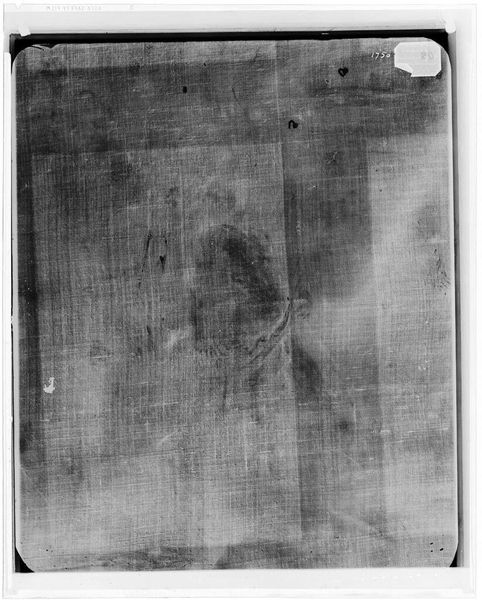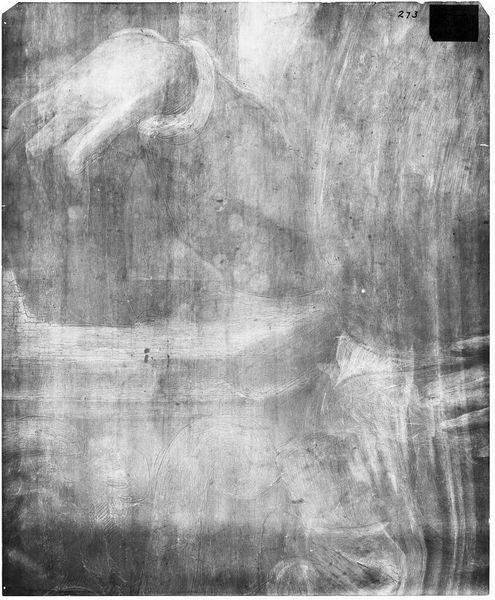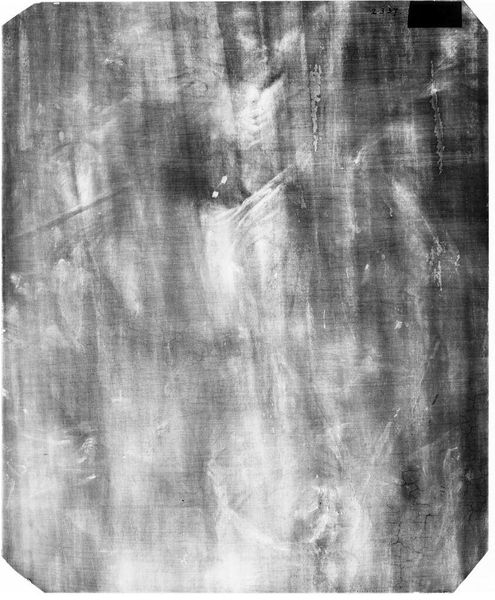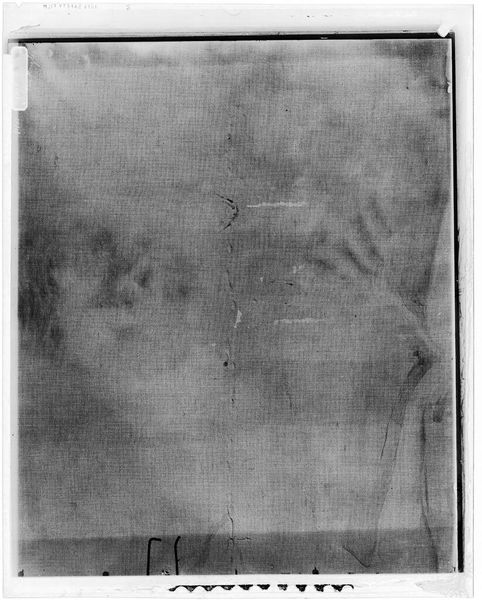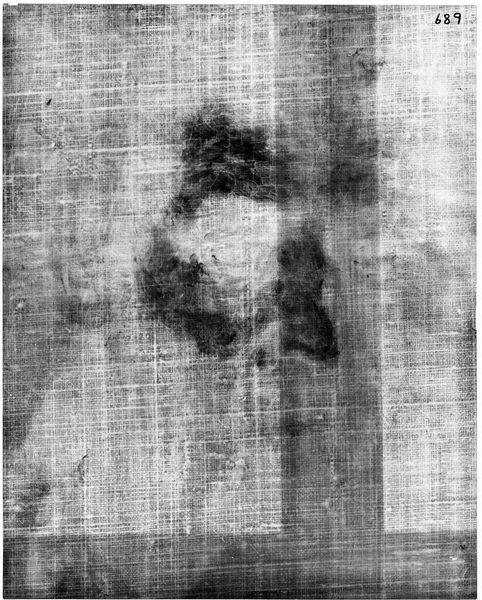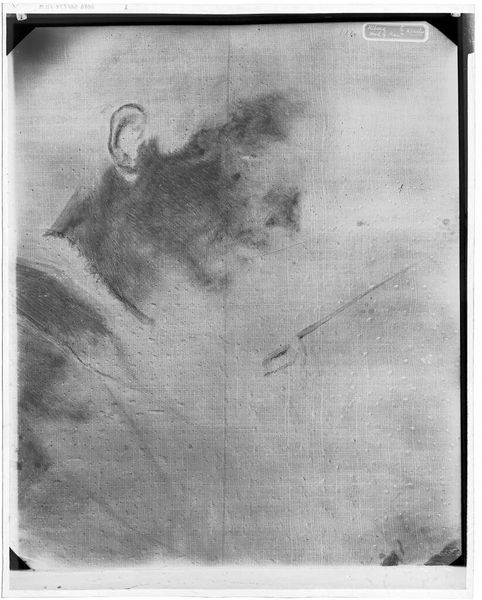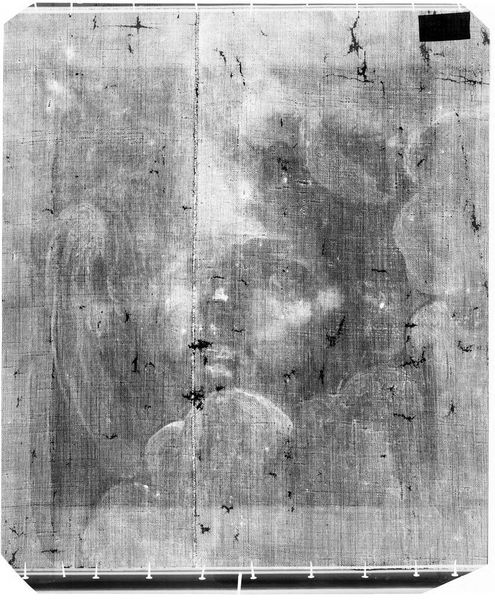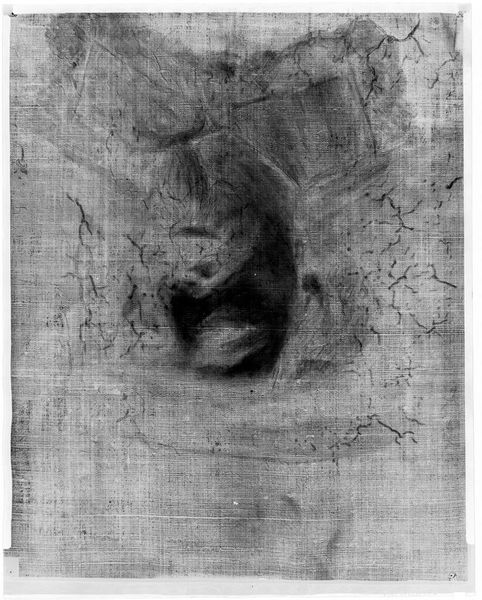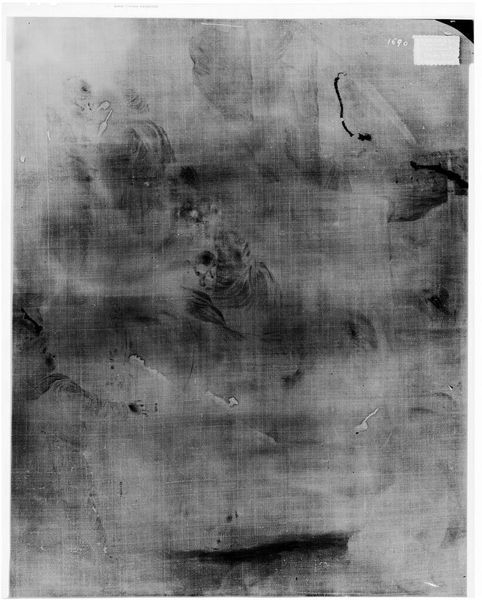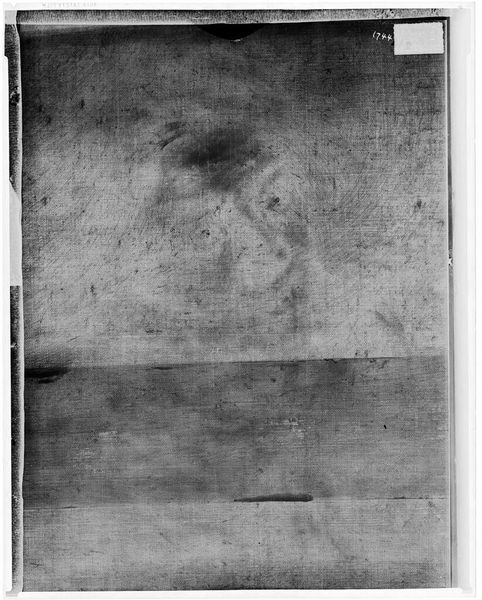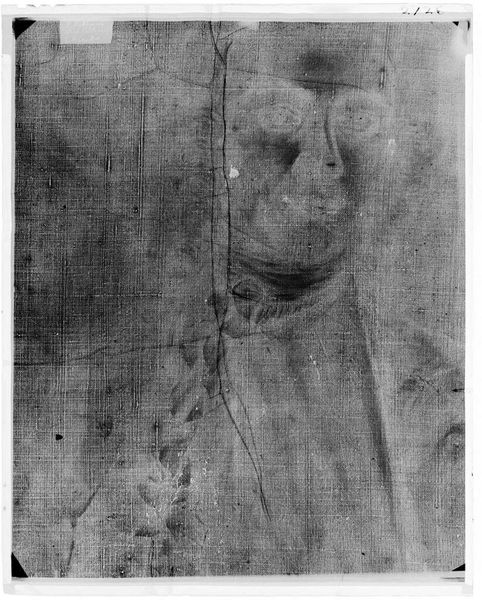
X-radiograph(s) of "Erasmus"
Copyright: CC0 1.0
Curator: This is an X-radiograph of "Erasmus," after Hans Holbein the Younger. The work is held in the Harvard Art Museums. Editor: The image has an eerie, ghostly quality, almost like a photographic negative of a portrait emerging from the depths. Curator: Indeed. The X-ray unveils the structural composition—the arrangement of forms, lines, and subtle contrasts. The subject's face, though obscured, retains a powerful presence. Editor: Seeing the painting this way, we consider the material support beneath the visible surface, the layers of paint and ground, and the labor involved in building up this image. Curator: The monochromatic palette forces us to focus on the interplay of light and shadow, enhancing our understanding of Holbein's original intent and compositional structure. Editor: It strips away the color, yes, but it reveals another kind of truth—a scientific probing into the artwork's physical essence and creation. Curator: This radiographic lens gives us a novel perspective that might change how we perceive the artistic expression, its material existence, and its cultural significance. Editor: Definitely, it really underscores how art history is about so much more than just aesthetics.
Comments
No comments
Be the first to comment and join the conversation on the ultimate creative platform.
